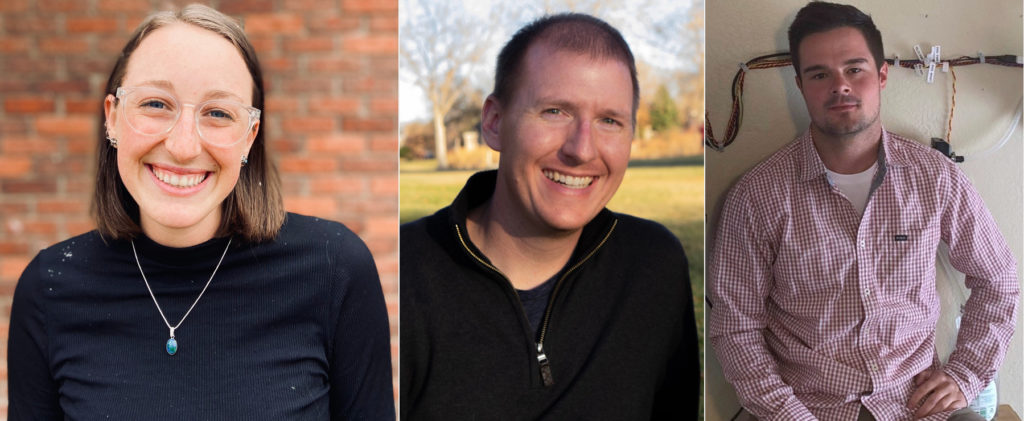
In the Walter Scott, Jr. College of Engineering, senior undergraduate students compete in what is fondly known as Engineering Days, or E-Days for short.
E-Days is a long-standing CSU tradition that allows students to showcase senior design projects and senior practicum research. E-Days visitors include faculty, family, industry representatives, peers, and prospective students interested in exploring engineering.
Typically a well-attended event in the Lory Student Center ballroom and outdoor plaza, the COVID-19 pandemic called for virtual sessions this year. Each student was required to submit a poster and deliver a 6-minute, virtual presentation. Students also participated in an hour-long open forum Zoom session where they had the opportunity to respond to attendee questions and share successes and challenges with peers.
Research or design?
In the Department of Mechanical Engineering, students have the unique opportunity to choose between a capstone research or capstone design experience. Students that choose design, MECH 486, are put into teams in a project-based course. Students that choose research, MECH 498, must apply for admission to the course, and if accepted, are paired with a faculty advisor and participate in a research project ranging from robotics to air quality to biomedical implants.
For a student who is interested in going to graduate school for engineering, MECH 498 provides invaluable experience to learn about graduate research. While still rooted in engineering and design, the hands-on research problems encountered are often funded by large federal agencies.
For a student considering staying at CSU for graduate school, there is the added advantage that they can get a one-year head start on the research component of their M.S. thesis or Ph.D. dissertation.
“MECH 498 is a great way for students to test drive graduate school and a research lab. It also allows the professor to ensure the fit is right for both parties before committing to a longer partnership,” said Bret Windom, Mechanical Engineering assistant professor. “I’ve had great luck finding incredible 498 students that have stuck around for their master’s and Ph.D.”
Meet the winners
This year, a panel of six judges graded fourteen MECH 498 students on their presentations with criteria including advanced knowledge of the topic, methods of research, and conclusions drawn. Judge scores also provided the basis for students’ E-Days grade, which comprises 15% of their semester grade.
Medals were awarded to first, second, and third place participants, as well as an honorable mention.
Counting down to first place, winners of the 2021 research competition are as follows.
Honorable Mention – Abbie Maben
Maben, under the guidance of Assistant Professor Shantanu Jathar, analyzed the spatiotemporal variability of air pollution and quantified the change in human exposure due to geographic location and large social disruptions such as the COVID-19 pandemic.
In her work, three spectrometers were deployed in Fort Collins to test the validity of a single monitor accurately describing the air quality of the region. In addition, the seventeen largest U.S. metropolitan areas were analyzed to determine the effect of the pandemic on the urban air pollutant burden.
Understanding the extent of variability with both time and space can give insight to potential health implications for people living in urban areas.
3rd place – Doncey Albin
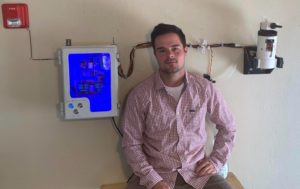
Albin, under the guidance of Professor Steve Simske, designed, built, and tested a wall-mounted fire tracking and extinguishing robot for indoor use. The goal of his research is to introduce a technology that can extinguish household fires, possibly serving as an alternative to traditional fire sprinkler systems.
“Sprinkler systems work, but they can cause major damage, are expensive to retrofit, and renters are left without options if they don’t have them on their property,” Albin said. “New advancements in robotics can widen the options for household fire elimination systems. This could mean saving lives.”
Albin will pursue a Ph.D. in robotics and controls this fall, and systems such as this will be high on his list of research interests.
“Who knows, maybe you’ll see this device on Shark Tank one day,” he said with a grin.
2nd place – Colin Slunecka
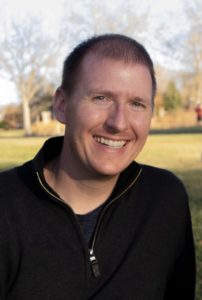
Slunecka, under the guidance of Professor Anthony Marchese, researched ways to increase the fuel efficiency of a heavy-duty propane engine. He did this by measuring the ignition delay of propane and other short hydrocarbons at high temperature and pressure with varying air-fuel ratio. The reduced chemical kinetic mechanism that was generated can simulate data and run efficiently in future 3D engine simulations.
“Propane is cheaper and produces less carbon dioxide emissions than conventional fuels. It could have a major impact on the transportation and trucking industries,” Slunecka said. “Also, the reduced chemical kinetic mechanism will be published so that anyone can use it for their own combustion simulations.”
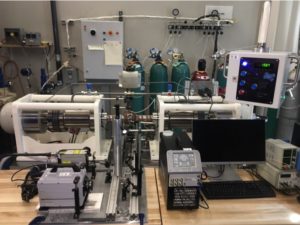
Slunecka said the most important thing he took away from the course was scientific writing.
“In MECH 498, you write a proposal and update reports, and your final paper is in the form of a published article. If you plan on being involved in research at any point in the future, then MECH 498 is a great opportunity to improve your writing skills,” he said.
Colin will pursue his master’s in mechanical engineering at CSU, with plans to work in the aerospace or defense industries.
1st place – Becca Schaldach
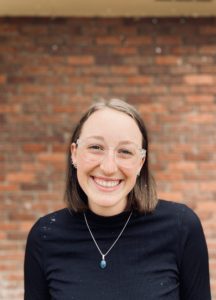
Schaldach, under the guidance of Professor Kirk McGilvray, researched the development of medical implants that encourage tissue regeneration to repair rotator cuff tears in the shoulder. She created a system that replicates the in vivo environment of the rotator cuff to test implant candidates.
“I designed the testing system by creating 3D computer models and analyzed my models using a software that simulates forces on the parts,” Schaldach said. “I then fabricated the testing system through 3D printing and machining.” The final system applies strain to the scaffolds to understand how they would react if implanted in the body.
This research has the capacity to change the future of surgery for rotator cuff repairs and beyond. Tissue regeneration is different than techniques used today. Currently, many surgical repairs utilize sutures and anchors that simply sew a tear back together. With tissue regeneration, the tissue heals itself and the tendon is theoretically as effective and strong as before the tear occurred.
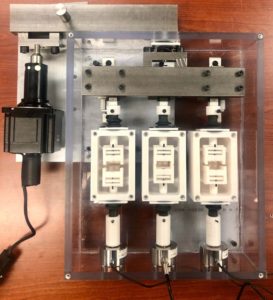
Schaldach also received this year’s Steven L. Schaeffer, Ph.D. Senior Manufacturing Award. This award is given to a senior of upstanding character who demonstrates professionalism and excellence in their approach to solving problems related to manufacturing.
Discovering how much she enjoys design and fabrication, Schaldach plans to pursue jobs in the biotech and medical device industry.